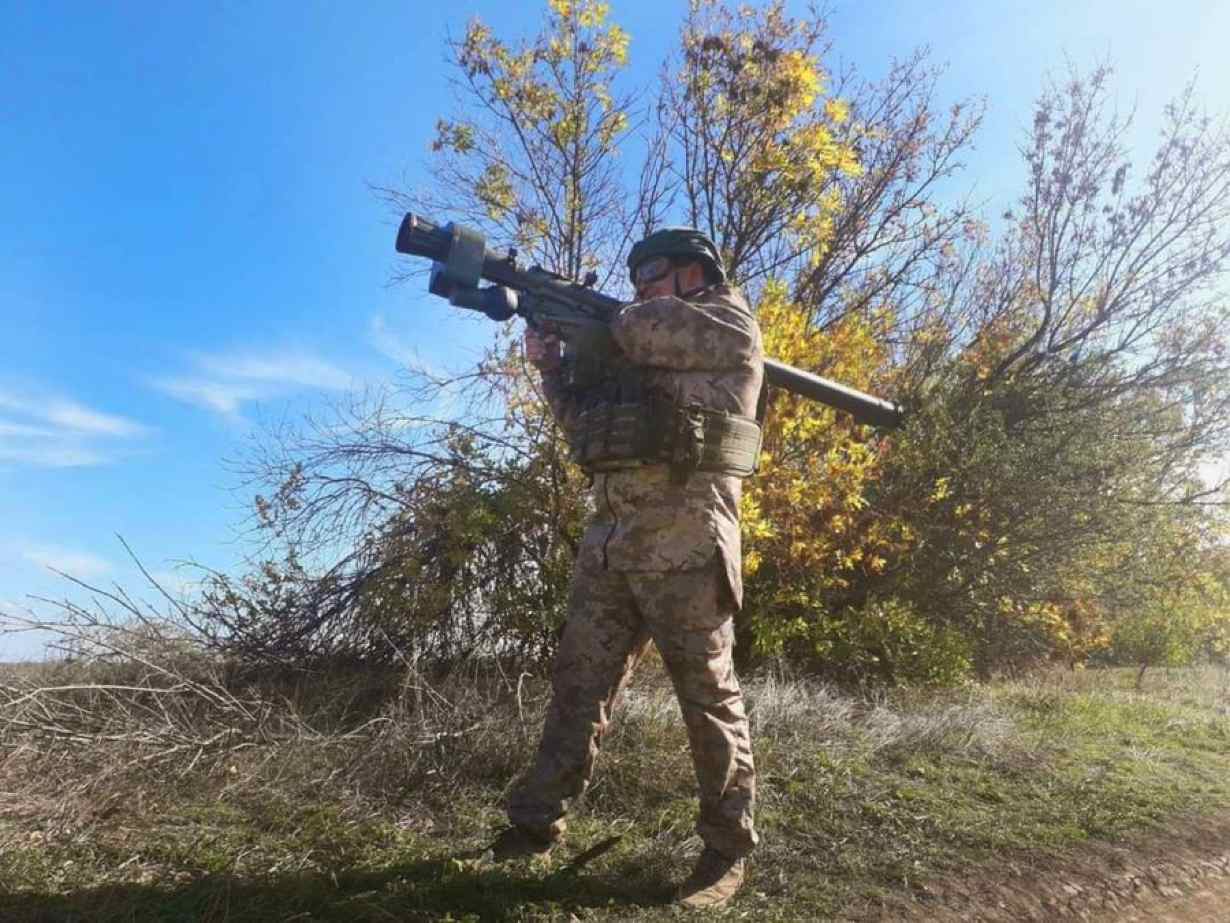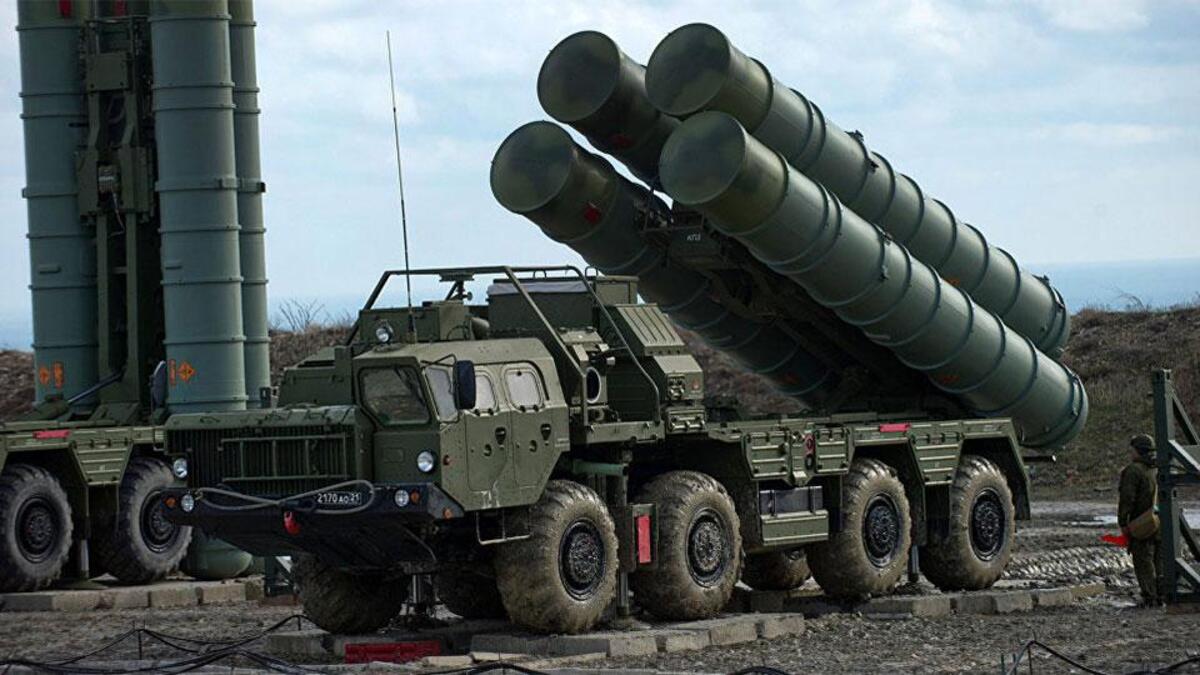A lot of digital ink has been spilled into the firepower packed by the hypersonic missiles, fighter jets, and big guns in the Russia-Ukraine War. Contrary to the hullabaloo around the expensive high-tech weapons, the humble man-portable air defense system (MANPADS) has emerged as the most effective weapon of this war against fixed-wing, rotary aircraft, and drones.
Ka-52 Alligator ‘Mauls’ Ukrainian Military, Punctures Its Counteroffensive; Kyiv Fights For Fighting Falcons To Break The Impasse
Dubbed the worst nightmare of Russian fighter jets, MANPADS have wreaked havoc on low-flying combat jets, helicopters, and drones. They are usually made up of three parts: a disposable carriage with a launch tube, which carries a missile, a power system, and a trigger or firing unit.
As reported by the EurAsian Times earlier, the MANPADS have been dubbed as a major ‘killer’ of its Su-35 and Su-34 fighters.
The Oryx website puts the losses of Russian fighter jets at 36. Russia lost 93 helicopters, nine Unmanned Combat Aerial Vehicles, and 128 Reconnaissance UAVs a year into the invasion.
The Ukrainian sources put the numbers even higher. They have formed the bulk of defense aid that the NATO countries have provided to Ukraine.
“It is not only that the MANPADS are the cheapest option available to take down aircraft, but it is also that nothing else is available,” Brigadier MKK Iyer, retired from the Indian Army, told the EurAsian Times. He was in the Air Defense of the Force.
Presently, MANPADS from several countries are deployed in Ukraine: the Soviet-era Igla, Swedish RBS-70 NG, French Mistrals, US Stingers, and British Starstreak. The significant difference between the Russian and the Western hand-held air defense system is that the former works on the heat-seeking principle, and the latter is laser-guided.

“Igla is the cheapest option of them all. The price of the French system is four times that of the Russian system. But they prove cost-effective as there is no way an aircraft can be targeted flying so low,” Brigadier Iyer added.
The NATO countries provided numerous MANPADS to the Ukrainian troops and mobile air defense units making the low-altitude flying of Russian fixed-wing and rotary aircraft sorties deep into Ukraine “prohibitively costly.”
And since April 2022, most Russian aircraft have restricted themselves to the border area and use glide bombs or long-range missiles to hit the Ukrainian target.
As Russia invaded Ukraine, the latter fielded medium and long-range air defenses, like the S-300s and Buk-M1s, which forced the Russian fighter jets to fly at altitudes below 4500 meters, right into the range of the man-portable air defense systems (MANPADS). These MANPADS accounted for a significant number of shoot-downs of Russian aircraft.
While explaining this, a Royal United Services Institute’s report said: “Without air superiority, Russia’s attempts at strategic air attack have been limited to expensive cruise and ballistic missile barrages at a much more limited scale. These failed to achieve strategically decisive damage during the first seven months of the invasion.
“However, the latest iteration is a more focused and sustainable bombardment of the Ukrainian electricity grid, blending hundreds of cheap Iranian-supplied Shahed-136 loitering munitions against substations with continued use of cruise and ballistic missiles against larger targets.”
The report was released in November 2022 and called for the West to “avoid complacency” and the need to bolster Ukrainian air defense capacity.
“It is purely thanks to its failure to destroy Ukraine’s mobile SAM systems that Russia remains unable to effectively employ the potentially heavy and efficient aerial firepower of its fixed-wing bomber and multi-role fighter fleets to bombard Ukrainian strategic targets and frontline positions from medium altitude, as it did in Syria,” the report adds.
The fallout of the lack of effective air cover, Brigadier Iyer says, has been that the armored component has also not been effective in the Ukrainian war.
MANPADS – Hit Or Miss?
Igla-S is the cheapest system among those deployed in Ukraine, but it doesn’t kill with a high probability of killing. According to a declassified CIA report: “The Igla-1 has a Pk (probability of kill) of 0.30 to 0.48 against unprotected targets, which is reduced to 0.24 in the presence of decoy flares and jamming. In another report, the manufacturer claimed a Pk of 0.59 against an approaching and 0.44 against receding F-4 Phantom II fighter not employing infrared countermeasures or evasive maneuvers.”
The same reports add that tests in Finland have shown that compared with the French Mistral, “the 9K38 Igla has inferior range and seeker sensitivity and smaller warhead, but it has a superior resistance to countermeasures.”
In the past, the success rate of Igla against enemy forces has evoked admiration and fear. But the full-scale war between Ukraine and Russia has brought to the fore the importance of MANPADS in denying Air Access.

The most notable combat use of the Iglas was during the Gulf War. On January 17, 1991, a Panavia Tornado bomber of the Royal Air Force was shot down by an Iraqi SA-16 MANPADS.
Later in 1995, after an unsuccessful bombing mission in Bosnia during Operation Deliberate Force, one French Mirage 2000 was lost over Bosnia to a 9K38 Igla fired by air defense units of the Army of Republika Srpska.
In Ukraine, the variety of MANPADS deployed will no doubt give its forces umbrella air defense capability.
MANPADS Have Higher Kill Rate Than Than S-300s/S-400s?
Iyer called the comparison between the Man Portable Air Defense System (MANPADS) and long-range missiles spurious and lacking nuance.
Brigadier Iyer explains: “S-400 isn’t junk. A country doesn’t spend big bucks on a system if it is junk. Even the US doesn’t have it (a comparable system).”
To bolster his point in favor of ground Air Defense, he adds: “Air Defense has to be layered. One ring of MANPAD does not solve anything. The adversary also employs different tactics to overcome the air defense systems. The enemy can send the aircraft in packages and will have an aircraft for air defense, for jamming enemy frequencies, and so on. The fighter jet attack will also be layered and multi-directional.”
He emphasized that the ground Air Defense aims to deter and not kill the aircraft. “After the Ukrainian war, it would be wrong to say that these systems (S-300/S-400) have become irrelevant. Remember, the long-range missiles also have ballistic capabilities that MANPADS cannot deliver,” Brigadier Iyer opines.
The S-400 air defense system is universal for destroying all types of aerodynamic targets and ballistic missiles with a launch range of up to 3,000 – 3,500 km.

The system has been designed to defeat air attacks from electronic warfare aircraft, airborne early warning and control systems, and reconnaissance aircraft acting both in an individual capacity and as parts of target acquisition and fire control systems; strategic bombers; tactical, short- and medium-range ballistic missiles; and other means of air attack in contested electronic environments.
The system is potent and counter stealth and can make it difficult for American F-35 fight-generation stealth fighters to operate. The counter stealth claims related to S-400 are primarily centered around the system’s acquisition radar called the AESA 1L119 NEBO SVU, which operates in the Very High Frequency (VHF) band.
“If a helicopter sneaks in at tree top and reaches close to the system, S-300/S-400 cannot do anything. That is why these systems come with short-range air defense systems to man the system’s periphery. It is like protecting the protected,” explained Brigadier Iyer.
The Air Defense officer stresses that to defend a given geographical area, the pre-requisite is to shift layers and have mobility, along with a capability to engage at different ranges. The MANPADS will form an important layer of air defense in Ukraine and remain a bane of Russian aircraft.
- Ritu Sharma has written on defense and foreign affairs for over a decade. She holds a Master’s Degree in Conflict Studies and Management of Peace from the University of Erfurt, Germany. Her areas of interest include Asia-Pacific, the South China Sea, and Aviation history.
- She can be reached at ritu.sharma (at) mail.com




